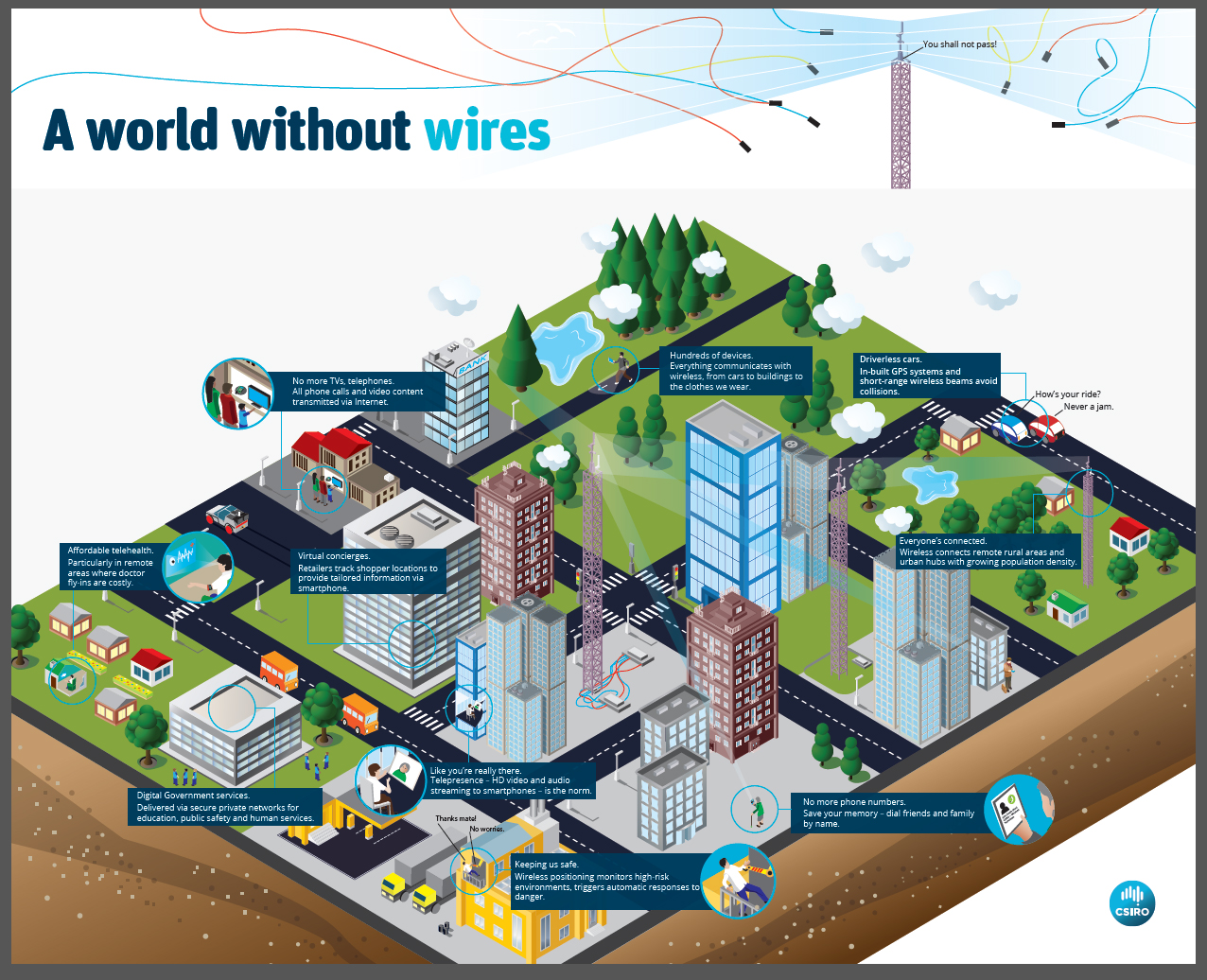Peak Data – coming to a network near you

CSIRO has released a report on “spectrum crunch” and the role of ubiquitous connectivity in future wireless applications.
The threat of ‘peak data’ and what that could mean for the way we connect and access essential services in the future, is the focus of a report released by CSIRO.
Director of CSIRO’s Digital Productivity and Services Flagship Dr Ian Oppermann said wireless technology had been adopted at “breakneck pace” in Australia and around the world.
“The data rates that people now expect from their mobile services are about a hundred times the amount we thought possible only two decades ago,” Dr Oppermann said.
The report, World Without Wires, points out that wireless communications rely on the availability of radiofrequency spectrum. The spectrum has practical limits and more spectrum cannot be created so we are faced with a finite resource and growing demands to use it.
Today’s technologies and infrastructure will be hard pressed to support further increases in demand, both in terms of speed and volume, for wireless data and services over the coming decades.
Many global cities, including here in Australia, are fast approaching the point of ‘peak data’ – where user demand for wireless internet, telephony, and other services can no longer be fully accommodated by the available radiofrequency spectrum.
“Currently the useable spectrum is divided up and allocated to various uses, such as TV/radio broadcast, emergency services, and mobile phone communications for example,” Dr Oppermann said.
“In the future, how spectrum is allocated may change and we can expect innovation to find new ways to make it more efficient but the underlying position is that spectrum is an increasingly rare resource.
“Some estimates suggest that spectrum demand will have almost tripled by 2020, and existing infrastructure will need to rapidly expand its currently available capacity if it’s to meet this demand.
“With more and more essential services, including medical, education and government services, being delivered digitally and on mobile devices, finding a solution to “peak data” will become ever more important into the future.”
World Without Wires examines the role that ubiquitous access to high-speed wireless connectivity will play in enabling a range of future applications and social developments, including:
(1) The replacement of digital TV and telephony services by internet-based, personalised streaming services
(2) Widespread sensing technologies that optimise and improve almost every aspect of our daily lives
(3) The widespread use of wireless positioning technologies, from making driverless cars the norm to enhancing retail experiences through “virtual concierges”
(4) “Tele-services” as the default model of service delivery for government and businesses, with education, healthcare and other public goods being delivered via private digital networks
(5) A radical improvement in the way existing wireless infrastructure accommodates ongoing growth in service demands, including smaller cells, smarter antennae, and beyond.
“Such developments will have a profound impact on both Australia and the rest of the world, constituting significant market opportunities, and a chance to deliver widespread public good from our wireless research and enterprise community,” Dr Oppermann said.
 Follow
Follow